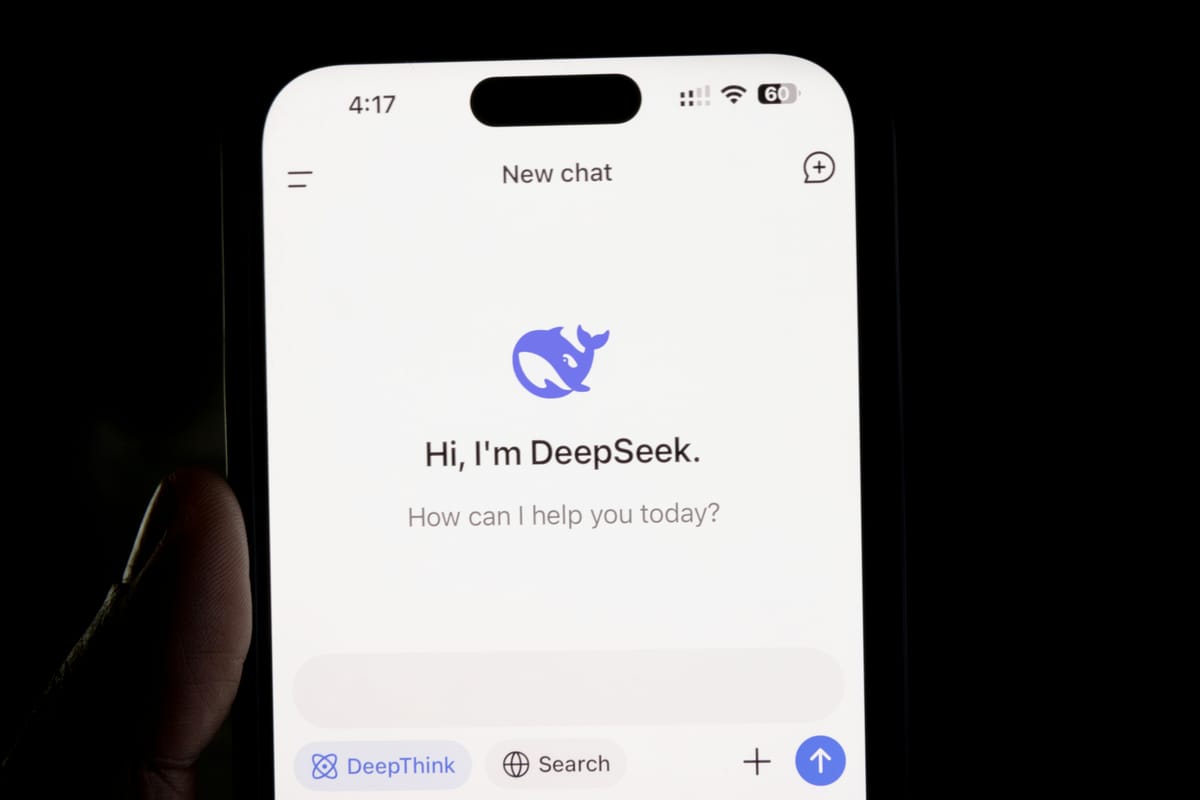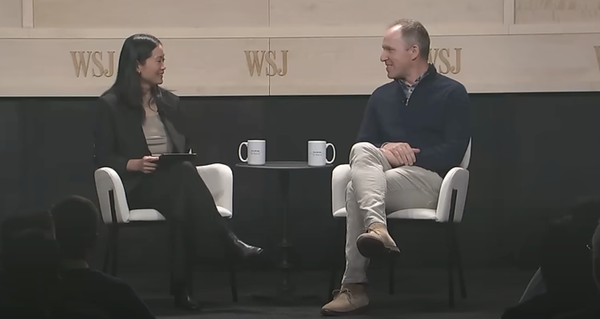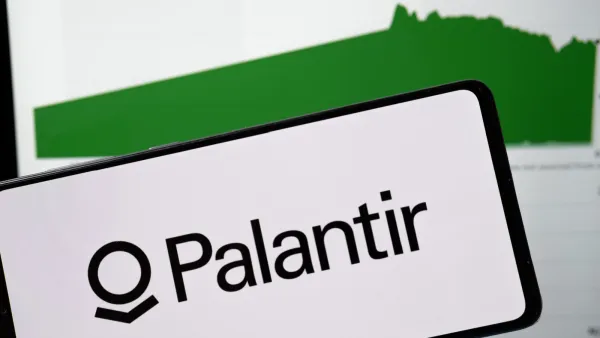DeepSeek: From Chinese Follower to Global AI Disruptor

How a startup's unexpected price war sparked a revolution in the AI industry and challenged Silicon Valley's dominance, while pursuing a unique vision of democratizing artificial general intelligence.
The content below is auto generated by Accunote AI:
Prologue
The release of DeepSeek V2 quickly triggered a vicious global AI large model market price war. Many people say that DeepSeek is the game changer and market disruptor. WenFeng Liang acknowledges that DeepSeek has indeed brought about significant changes in the AI industry. The company's innovative approach and competitive pricing strategy have disrupted the existing market dynamics, forcing other players to reassess their positions and adjust their strategies. This sudden shift in the market landscape has led to intense competition and price adjustments across the industry, as companies strive to maintain their market share and attract users in the face of DeepSeek's growing influence. The company's technological advancements and unique offerings have set new benchmarks in the AI large model market, challenging established players and inspiring new entrants. This disruptive force has accelerated innovation across the industry, pushing companies to improve their products and services at a faster pace to keep up with DeepSeek's rapid progress.
DeepSeek's role as a game changer is not limited to its technological prowess. The company's approach to market entry and expansion has forced other competitors to rethink their business models and go-to-market strategies. This has led to a more dynamic and competitive ecosystem, ultimately benefiting end-users through improved products, lower prices, and increased innovation. By offering solutions that combine advanced capabilities with accessibility and affordability, DeepSeek has expanded the market for AI large models, bringing these technologies within reach of a broader range of users and applications.
Q1: What was DeepSeek's intention behind the release of V2, and how does the company respond to being called a game changer or market disruptor?
DeepSeek did not intend to become a game changer or market disruptor; it happened by accident. The company was extremely surprised by the market's response and never thought people would be so sensitive to the price they set. DeepSeek is simply following its own pace, calculating its cost overheads, and setting prices accordingly. The company's principle is to avoid losing money while also not overcharging customers. The price set is slightly above cost, and DeepSeek is satisfied with its margin. Grabbing customers is not a priority for DeepSeek. The company lowered its price because through research, it found ways to lower costs. Additionally, DeepSeek believes that AI or AGI should be a technology that is affordable to everyone.
Q2: Why did DeepSeek decide to build its own large model instead of using existing models like LLaMA, and how does it compare to other models in terms of efficiency?
DeepSeek's goal is AGI, not just building applications. The company wants to push the strength of its model with limited resources, considering this process as basic research needed to scale up to larger models. To make the model more events-driven and human-like, DeepSeek also spends time developing data structures. LLaMA's training efficiency and costs are already two generations behind the market's existing leaders in the US. The training efficiency is lower, requiring double the computing power from the best model in China to match the best one outside of China. Data efficiency is also only half, so it probably requires four times the resources in China to match the best model in the world right now, which is in the US. DeepSeek's goal is to keep narrowing that gap. The company's focus is on innovation, aiming to be a market leader in technology to help drive the entire ecosystem forward, rather than just borrowing ideas from others for quick market entry.
Q3: How does DeepSeek view China's role in technological innovation, particularly in the AI sector, and why is it believed that V2 surprised many in Silicon Valley?
DeepSeek believes that China should contribute to global innovation rather than being a free rider. In the last 30 years of IT development worldwide, China basically didn't participate in any real technological innovations. The country has been too used to waiting for others to come out with better hardware and software, expecting new innovations to appear like magic. In reality, these are the result of research and development by technological innovators, currently dominated by Western countries. China is not just 1 or 2 years behind; it's the difference between original innovation and imitated innovations. DeepSeek V2 surprised many in Silicon Valley because it's an ordinary innovation among the many that occur in the United States every day, but this time it came from a Chinese company. Chinese companies are known to be followers, not innovating leaders in this sector. The cost of innovation is higher, and the tendency to just follow has become somewhat of a specialty in China. However, given the size of the Chinese economy and the substantial profits generated by giant tech companies, what China lacks is not funding but self-confidence and experience in putting together talents to achieve these innovations. In the last three decades, Chinese companies prioritized getting wealthy quickly, ignoring real innovation. Innovation is not purely market-driven; it also requires curiosity and a creative-driven attitude. Chinese people are too used to being followers, which subconsciously limits their imagination. DeepSeek believes this is due to change.
Q4: DeepSeek decided to pursue innovation and share its new product through open source. How and where does the company plan to place barriers on its products?
For breakthrough advancements, the time bought through protectionism is limited. Even companies like OpenAI that chose to become closed-source cannot avoid being caught up to and eventually surpassed. Deepseek values its team and sees the project as an opportunity for colleagues to learn efficient collaboration, gather know-how, and form an innovative organization and culture. This will eventually become Deepseek's advantage and barrier. Deepseek doesn't believe it loses much by adapting open source, as it's a display of attitude rather than being profit-driven. The company believes that China cannot be a follower in the AI sector forever. While the common knowledge is that China's AI sector is 1 to 2 years behind the United States, the real difference lies in original innovation versus reverse engineering. Deepseek aims to change this follower mentality and explore its own path forward.
Q5: Will DeepSeek choose to become closed-source in the future, similar to OpenAI?
No, Deepseek will not become closed-source. The company believes the most important thing is to build a strong technological ecosystem, so it will remain open-source. In the short term, Deepseek is not looking for new investors. The problem they face is not funding, but the lack of access to high-end AI chips due to sanctions.
Q6: What is DeepSeek's strategy regarding the application market and ecosystem development?
Deepseek believes that AI is at a stage where there will be many technological breakthroughs, but the real era for AI applications has not yet arrived. In the long run, Deepseek aims to create an ecosystem. The company wants to focus on advancing large language model AI and stay in the market-leading position while partners build applications and value using their models. This includes partners using Deepseek's models for B2B or B2C businesses. If they can successfully create the ecosystem, there's no need for Deepseek to develop its own applications. While they won't shy away from the app business, research and innovation in LLM will always be their top priority.
Q7: Why would people choose DeepSeek for API instead of tech giants in the long run?
The world likely consists of companies specialized in unique sectors. LLM requires continuous innovation, which might not fit the priority or culture of larger companies such as big tech companies. Larger companies have their own limits. While technology secrets aren't a strong enough barrier, technology development requires time and resources. It's easy to duplicate, but organizing a team and chasing after new generation technology needs time. So, the real barrier is wider than most people anticipate.
Q8: How does DeepSeek view the competition between innovative startups and larger market-leading companies, including tech giants?
Providing cloud services is not Deepseek's primary objective; their primary objective remains the advancement of AGI. Deepseek doesn't see any major breakthrough on the horizon, but also doesn't see any major advantage of larger companies. While larger companies have existing users, their business model and revenue are also their burden, making them vulnerable to being surpassed.
Q9: What is DeepSeek's opinion regarding other LLM startup companies in China, and what does the potential end game look like?
Deepseek believes that maybe 2 to 3 companies will survive. Currently, all companies are burning through investment, so those with a clear vision and focused strategy are more likely to survive. Other companies might branch out and transform into other business sectors. As long as they can create value, they can exist in one form or another. Deepseek's philosophy is whether a product can help society operate at a higher efficiency and whether the company can find its position in the entire supply chain. As long as it drives up efficiency, it has value.
Q10: Can you describe the kind of people DeepSeek hired to work on its project?
There are no top super geniuses at Deepseek, just fresh graduates from top universities, PhD students, and young talents with a few years of experience under their belt. Some believe that the top 50 talents in these sectors are likely not in China to begin with.
Q11: How does DeepSeek find and attract top AI talents?
DeepSeek V2 was built entirely by domestic talents. While the top 50 AI talents might not be in China, DeepSeek can cultivate its own talents. The company's approach involves studying patterns of mainstream tension architecture, development, and breakthroughs. In one instance, a young engineer had a sudden inspiration to design an alternative architecture. However, turning this idea into a functional program took a few months to make the breakthrough. DeepSeek believes that innovation requires self-confidence and self-belief, characteristics more pronounced in younger people. The company is working on the most difficult projects, which automatically attracts the best talents. The brightest individuals are often drawn to solving the most challenging questions in the world, especially given the general lack of core innovation in China.
Q12: What is DeepSeek's perspective on innovation in AI, particularly compared to tech giants?
DeepSeek believes that all AI labs, whether from Google, OpenAI, or other U.S. companies, are valuable. Innovation in Silicon Valley is driven by courage. Many investors and tech giants think the gap is too big to catch up, so they focus on making applications. However, DeepSeek emphasizes that innovations require self-confidence and self-belief. The company is positive about the future of AI development, stating that OpenAI is not infallible and it's unrealistic for them to always lead the charge. DeepSeek is open to all possibilities and focuses on developing the next generation AI model.
Q13: What is DeepSeek's roadmap for achieving Artificial General Intelligence ?
DeepSeek estimates that AGI might be achieved in 2 years, 5 years, or 10 years. While there's no clear agreement on the roadmap even within the company, they are currently focusing on three main directions: 1) Mathematics and coding, which serve as a natural testing bed for AGI, similar to chess games where outcomes can always be verified. 2) Multi-modal models, which engage AI in real-world learning. 3) Natural language processing. The company believes that self-learning in enclosed environments like math and coding can achieve a high degree of artificial intelligence. They are open to all possibilities in their pursuit of AGI.
Q14: How does DeepSeek view the impact of economic downturn on innovative AI projects?
DeepSeek believes that future growth will rely more on core innovation. As the era of quick money-grabbing in the Chinese market comes to an end, people will be more willing to participate in true innovation. The company draws parallels to societal changes, noting that in just one generation, perspectives on education and wealth generation have shifted dramatically. While the concept of core innovation might not be well understood currently, DeepSeek expects it to become mainstream in the future. The company believes that as more innovators become successful and generate wealth through innovation, the mentality will change.
Q15: What is DeepSeek's perspective on talent cultivation and the future of AI innovation in China?
DeepSeek believes in cultivating domestic talents. The company acknowledges that while the top 50 AI talents might not be in China, they can develop their own. They focus on tackling the most difficult tasks, which naturally attracts the brightest minds. DeepSeek sees a general lack of core innovation in China, making it difficult for the brightest individuals to reveal themselves. However, they are optimistic about the future. As the Chinese economy transitions away from quick wealth generation, DeepSeek expects more people to participate in true innovation. They believe that core innovation will become mainstream in the future, although this concept may still need time to be fully understood and embraced by society.




